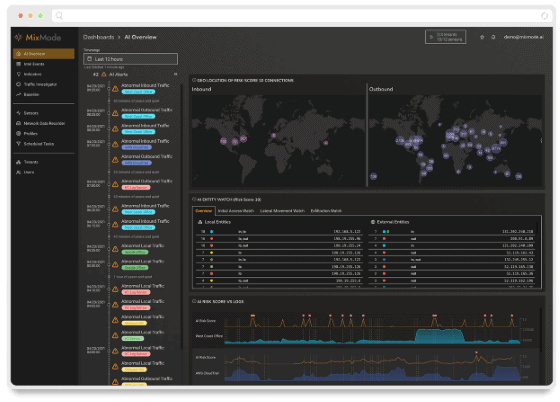The cybersecurity provider landscape is cluttered with impossible claims, misrepresentations, and a confusing mix of inconsistent terminology. Worse, every minute you delay making a decision is another minute hackers have to gain access and knowledge about your network.
With so much on the line, choosing what kind of platform and which company to trust with your company's data privacy can become a stressful decision. Leaning toward an AI-enabled platform is a step in the right direction, but which platforms actually do what they say they do?
Luckily, you don't have to become an expert in AI cybersecurity to learn how to evaluate the efficacy of AI-enabled cybersecurity platforms. There are a few overarching components common to true AI platforms, and a few common marketing claims that should trigger some skepticism.
Sometimes, "AI" isn't really AI at all. Many companies that are still using standard security techniques describe their products as AI to take advantage of the current interest in AI cybersecurity tech. There are no doubt hundreds of companies who are charging ahead under the mistaken idea that their security platform is using AI.
How can you tell?
A straightforward way to determine if your platform is using "real" AI is to take a look at update frequency.
At its best, AI can enhance your data security by becoming so in tune with your network that it can detect even small irregularities. Over time, authentic AI continually improves your network security and provides regular updates about what it's discovered. If you don't see much evidence of updates, you are likely not benefiting from real AI.
Instead, your network security is probably limited to the standard, rule-based analysis that has become commonplace over the past 15 or more years. It doesn't mean you are completely unprotected, but there's a good chance you aren't benefitting from the most recent AI advancements.
All AI Cybersecurity Platforms Are Not Created Equally
Once you've determined that a platform is, in fact, utilizing AI, it's time to evaluate its performance. An excellent place to start is taking a look at how a platform's AI learns.
Machine Learning Capability
In broad terms, AI-enabled cybersecurity platforms employ either Supervised or Unsupervised Machine Learning (ML).
Supervised Machine Learning refers to threat detection based on known threat data. Threats are classified according to risk unique to a given network. In other words, supervised machine learning AI predicts the likelihood of attacks based on human inputs. Its detection ability is limited to the accuracy and recency of those inputs.
Unsupervised Machine Learning detects threats based on the information it has obtained by essentially living on your network. Done well, this type of AI can be an incredibly powerful ally when it comes to detection accuracy and predictability. Best of all, true unsupervised AI technology only gets better with age.
Why MixMode Stands Out
You can further examine the quality of AI cybersecurity platforms by asking your provider questions that reveal how their product works. Chances are, their offerings won't be able to stand up to MixMode's Third-Wave AI capabilities.
What happens after the initial setup?
MixMode's third-wave AI is unspervised and actively learns about the nuances of your network without the need for human tuning. Then, it adapts to changes over time. If you invest in a product without these capabilities, your team will need to deploy manual updates and check to make sure they are reflected in system reports.
How exactly does the product use machine learning to detect cyber attacks?
For instance, learn how the product uses machine learning to detect specific attack types (i.e., ransomware) to reduce false positives and improve accuracy. MixMode utilizes a proprietary patented system that was initially developed for DARPA and the DoD to identify anomalies in your network and is the first genuinely predictive cybersecurity solution.
How long does it take to train the AI model?
Most Supervised AI-enabled Cybersecurity platforms can take 6-24 months of training before they can provide true value to operators. Once applying MixMode to your network, it will start detecting anomalies in only 7 days.
Conclusion
Sophisticated, imminent security threats require a sophisticated, immediate solution that grows alongside your network. AI can help meet that need, but only when it is fully implemented by a team that has a deep understanding of the field. MixMode stands on the cutting edge of AI-enabled cybersecurity.
With a comprehensive security system in place, your team will be able to redirect their talents to the work at hand instead of responding to endless false positives and deciphering unclear security warnings. We'd love to talk with you about how MixMode's third-wave AI can create a baseline understanding of your network in one week. Set up a demo today.
MixMode Articles You Might Like:
An Introduction to Baselining Technology
How to Create a Baseline for Your Network
Case Study: MixMode AI Detects Attack not Found on Threat Intel
Multi-Stream Cybersecurity and How it Can Save Your Business from a Zero-Day Attack
Using CloudTrail for Cyber Security with MixMode’s AI
Whitepaper: Unsupervised AI – AI for Complex Network Security


